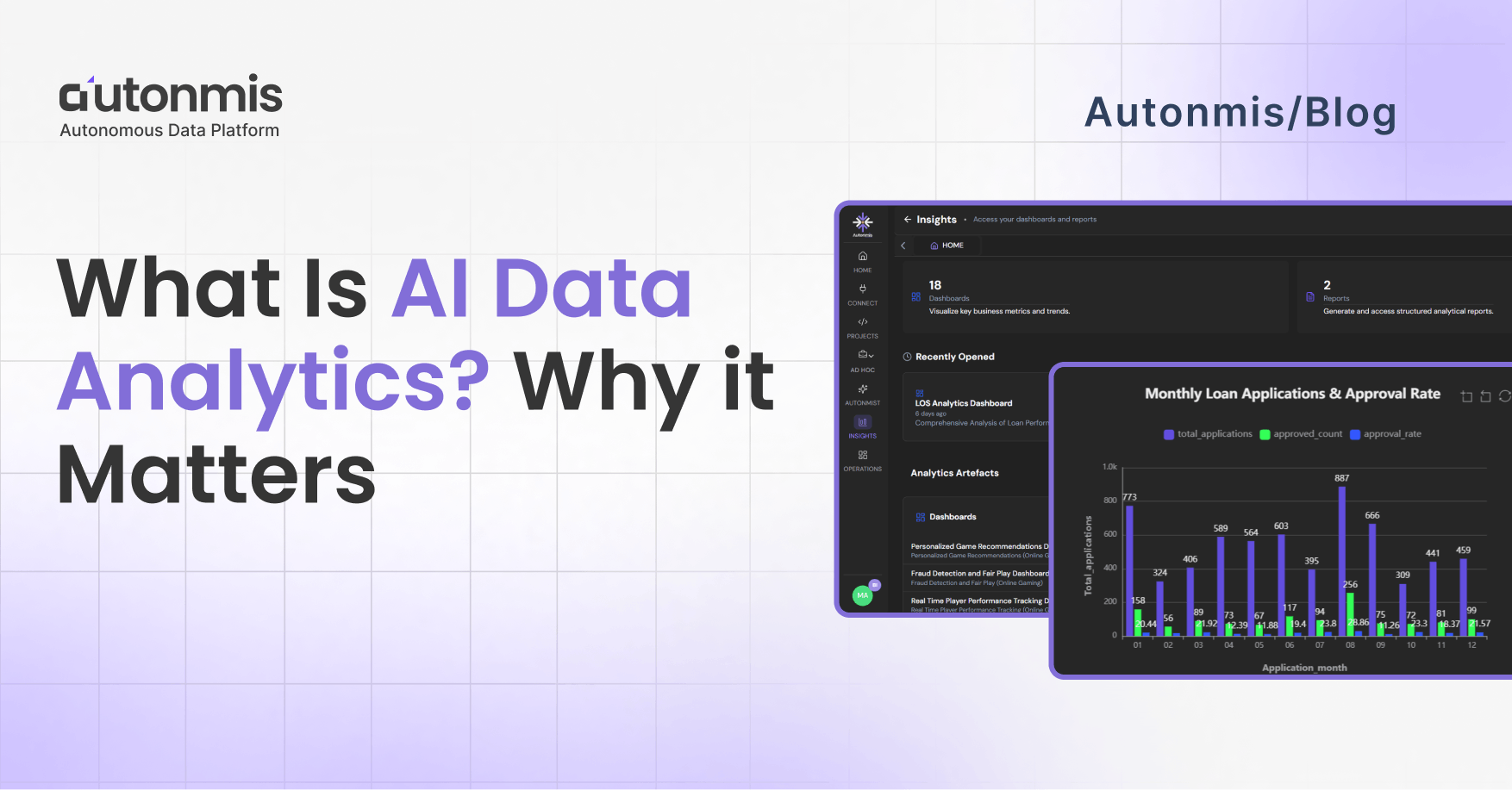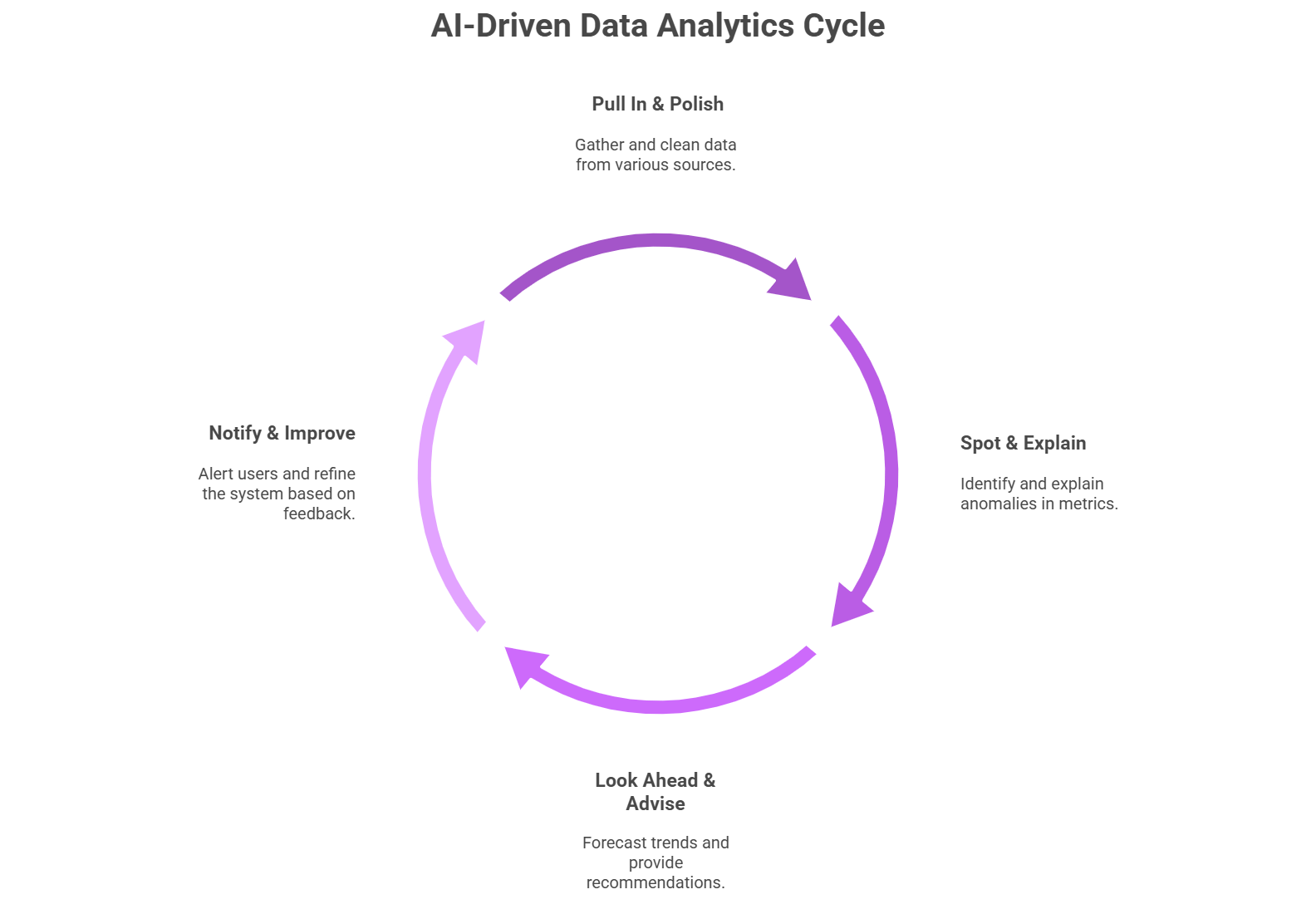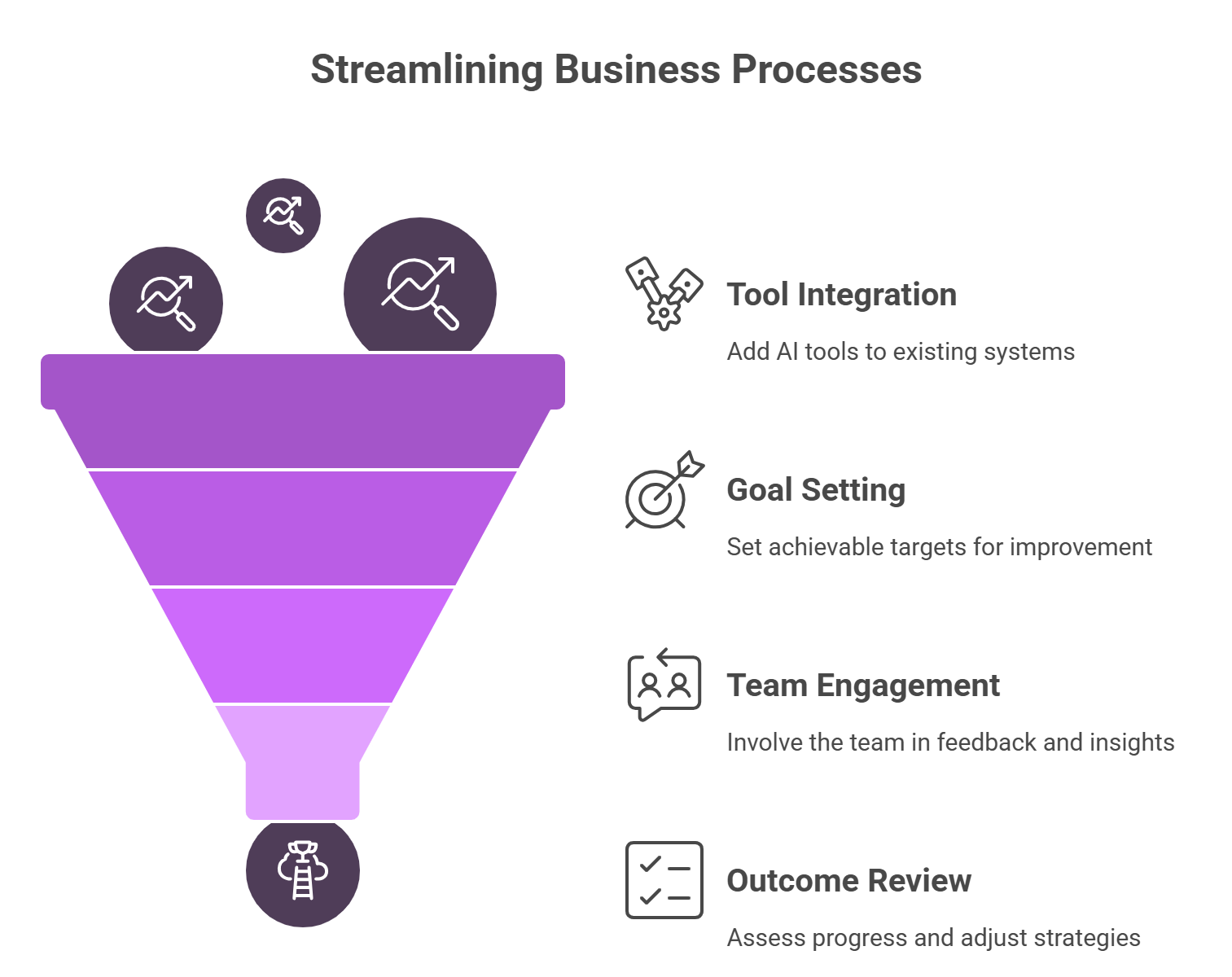7/11/2025

AB
What Is AI Data Analytics? Why it Matters
Discover what is AI data analytics and how it transforms raw data into actionable insights, helping teams spot issues early and make informed decisions effortlessly.

When someone mentions what Is AI data analytics?, it can feel like jargon - something out of reach for most teams. But think of it this way: AI in data analytics is just a smarter way of looking at the numbers you already have, so you spot problems sooner, understand what’s really going on, and decide what to do next without wading through endless spreadsheets.
This isn’t about flashy dashboards or magic solutions. It’s about helping people, whether you’re in operations, marketing, product, or finance - work with data in a way that feels natural, useful, and, yes, even a little fun.
Why You’ll Care
Imagine you’re managing an online store. One morning, you notice more customers are asking about late deliveries but your daily report won’t catch that for another 24 hours. By then, upset orders have piled up, and your team is scrambling.
Now picture AI powered data analytics that:
- Watches your delivery times all day, spotting any dip in performance as it happens.
- Checks a few likely causes - maybe your carrier’s API is glitching or you’ve just had a surge of orders from a new region.
- Sends a quick note to your team: “Hey, deliveries from Carrier X are 10% slower today; maybe reroute 20% of orders to Carrier Y.”
That’s not sci‑fi. It’s AI analytics at work - turning raw data into clear, actionable insights that can save you hours of firefighting and loads of frustrated customers.
A Simple Four‑Step Process
Pull In & Polish
Connect to your order system, ad platform, support tickets - wherever your data lives.
Let simple rules and smart checks flag oddities (like missing values or weird spikes) before they throw off your numbers.
Spot & Explain
Keep an eye on your key metrics - sales, delivery times, conversion rates - and flag anything unusual with AI in data analytics models.
Link those changes back to possible causes: a marketing push, a site update, or a supplier hiccup.
Look Ahead & Advise
Use basic forecasting to see where things are likely headed.
Get straightforward suggestions: “Shift a bit more budget to that ad channel this month,” or “Order extra stock for Region Z next week,” all courtesy of AI powered data analytics.
Notify & Improve
Get crisp alerts in Slack or email - no need to dive into a new app.
Tell the system what was helpful (or what missed the mark) so it gets better over time.
Every time you take action, you feed back results. The next alert is a bit sharper, the next forecast a bit more tuned to your reality - classic positive feedback from AI analytics.

Checkout: How AI is Transforming the Role of Data Engineer
Clearing Up Misunderstandings
- “This is only for big companies.”
You might be surprised: small teams often see their first big wins in just days. You don’t need dozens of data scientists - just a clear goal and the right setup. - “It’s too hard to keep running.”
Once you’ve got your data flowing and your alerts set, maintenance is mostly about adjusting sensitivity - telling the system “too noisy” or “need more signals” rather than rebuilding everything. - “I’ll get buried in false alarms.”
Good tools learn from your feedback. Before long, you’re only seeing the things that truly matter, not every little blip.
Seeing It in Action: A Day in the Life
Let’s return to our e‑commerce manager, Maya:
- Morning Check‑In
Maya’s Slack pings: “Conversion rate on Mobile App down 8% last 2 hours.” That’s AI analytics at work - no more waiting for morning reports. - Quick Dive
She clicks a link and sees a new app version went live at 9 AM. A simple correlation check points to a bug in the checkout flow. - Fix & Communicate
Maya’s team patches the bug within an hour. The system then suggests sending a note to customers who abandoned carts. Maya drafts the message and hits send. - Afternoon Forecast
The system predicts a slight uptick in support tickets tomorrow based on past bug incidents. It advises assigning an extra agent for the morning shift.
By evening, the checkout is smooth again, and Maya’s team is ahead of the support curve - no surprise backlog and happier customers. All made possible by AI in data analytics quietly working behind the scenes.

Checkout: How to Implement RAG in Business Operations: Step-by-Step Guide
A Few Lesser‑Known Tricks
- Auto‑Mapped Data Paths
Some tools can trace how your numbers move from raw feeds to dashboards by examining your pipelines. That means less time digging for definitions and more time acting on insights. - Built‑In Recipe Suggestions
Instead of guessing which forecasting method to use, a few platforms recommend the right one, based on your data’s quirks - right inside your notebook or spreadsheet. - Embedded Storytelling
You can attach short narrative summaries to key metrics, so when someone on your team checks the dashboard, they see both the chart and a plain‑English note explaining what changed.
These features aren’t everywhere yet, but they make the analytics process feel a lot more…well, human.
How to Start, Without Overthinking
- Pick a Single, High‑Impact Metric
Whether it’s on‑time delivery, campaign ROI, or churn rate - focus on one thing you care deeply about. - Layer Smart Tools on What You Have
You don’t have to rebuild your data warehouse. Try adding AI powered data analytics to your existing BI setup or notebook workflows. - Set Simple Goals
Aim to cut your time‑to‑insight in half for that one metric, or reduce pesky false alerts by 50 percent within six weeks. - Bring Your Team Along
Share those first alerts in a dedicated Slack channel. Encourage feedback - “Was this helpful?” or “Missed anything?” - Review & Repeat
Every two weeks, look at the outcomes: faster fixes? fewer issues? better outcomes? Tweak your pipelines and alerts accordingly.

Checkout: Top 10 Data Analytics Trends in 2025: What You Need to Know
Why This Matters
At its heart, smarter analytics is about more than technology. It’s about giving teams the clarity they need to move forward confidently. It means fewer surprises, quicker fixes, and more time spent on meaningful work instead of firefighting.
So if you’re ready to see what your data can really do without a dozen meetings, endless build cycles, or towering budgets - give this approach a shot. Start small, stay grounded, and let AI analytics guide you to smarter decisions every day.
Recommended Learning Articles

10/23/2025
Top 6 Ways AI Is Transforming Business Operations

9/22/2025

AB
The Hidden Cost of Manual Operations in BFSI
Actionable Operational Excellence
Autonmis helps modern teams own their entire operations and data workflow — fast, simple, and cost-effective.